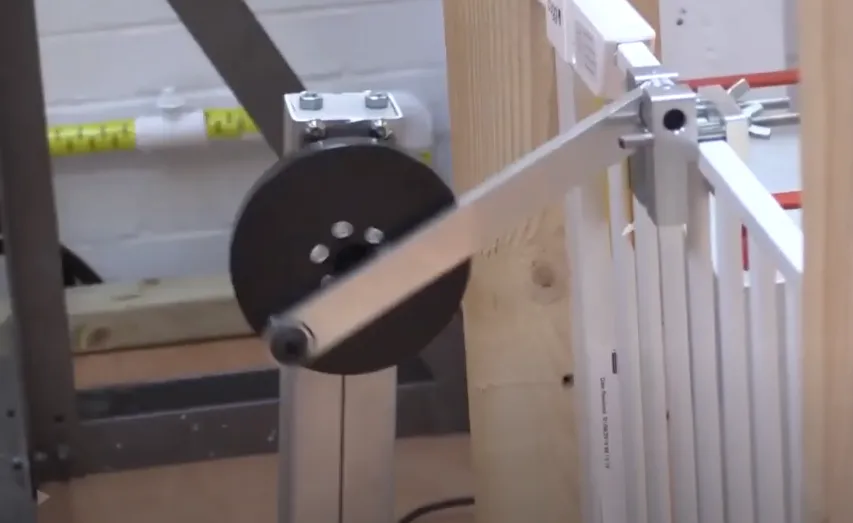BS EN 17191 Children’s High Chairs Safety Testing
The British Standard European (BS EN) 17191 is a crucial framework for the safety evaluation of children's high chairs, ensuring that these products meet stringent international quality and safety standards. This standard covers various aspects such as structural integrity, stability, materials used in manufacturing, and overall usability to provide a safe environment for infants and young children.
Structural integrity is paramount in this category. The standard mandates rigorous testing to ensure that the high chair can withstand the stresses associated with daily use without compromising on safety or durability. Stability tests assess whether the chair remains secure when placed on surfaces, especially during accidental tipping. This is critical as children often pull and tug at furniture which may lead to instability.
Material selection plays a vital role in the design of high chairs. The standard specifies that materials must be non-toxic, durable, and easy to clean. Materials like wood should not contain harmful chemicals such as formaldehyde. Synthetic materials used for padding or covers need to be flame retardant while also being child-friendly. This ensures that even if a small part is ingested by the child, it poses minimal risk.
Usability features are another key aspect of BS EN 17191 compliance. These include aspects like ease of assembly and disassembly, accessibility for caregivers to secure or unsecure the child safely, and the ability to adjust components such as height settings or tray positions. The standard also ensures that the design is intuitive enough so that parents can quickly recognize any potential hazards.
Testing procedures involve multiple stages including visual inspections followed by functional tests under static loads. For example, a 10 kg weight distribution test checks if all legs maintain contact with the ground when seated at full capacity. Another critical part of testing involves simulating real-world scenarios where children might attempt to climb out or push against certain parts. Additionally, there are specific requirements regarding the strength and durability of belts and harnesses used in high chairs.
- Visual Inspection: Ensures no visible defects such as cracks, splinters, or loose screws that could pose a risk to children.
- Static Load Testing: Determines how well the chair can support a load equivalent to a fully grown adult sitting in it for extended periods without causing any deformation.
- Dynamic Stability Tests: Simulates typical movements and forces exerted by children during playtime or feeding sessions. This helps identify any potential wobbling or tipping issues which could result in falls.
The comprehensive nature of BS EN 17191 guarantees that manufacturers produce high-quality products designed specifically with safety at heart. By adhering to these standards, companies not only protect consumers but also enhance their brand reputation by demonstrating commitment towards public health and welfare.
Quality and Reliability Assurance
Ensuring the highest level of quality assurance is integral to our approach when conducting BS EN 17191 Children’s High Chairs Safety Testing. Our team comprises experts who understand both the nuances of this standard as well as current trends in infant furniture design.
We employ state-of-the-art equipment and methodologies that accurately replicate real-world conditions experienced by children using these products. Our laboratories are equipped with advanced measuring devices capable of detecting subtle changes indicative of structural weaknesses or material failures long before they become apparent to consumers.
Our quality assurance processes go beyond mere compliance; we strive for excellence in every aspect, from initial product conceptualization through final production stages. This includes continuous monitoring during manufacturing to catch any deviations early on and make necessary adjustments immediately.
In summary, our commitment to quality ensures that only the safest high chairs reach marketplaces worldwide. By adhering strictly to BS EN 17191 requirements and leveraging cutting-edge technology, we maintain a leading edge in providing reliable safety testing solutions for children’s furniture.
Environmental and Sustainability Contributions
- We prioritize the use of sustainable materials that are biodegradable or recyclable. This reduces waste generation throughout a product's lifecycle, contributing positively to environmental conservation efforts.
- Incorporating energy-efficient practices into our laboratory operations helps minimize carbon footprints associated with testing processes. For instance, using LED lighting and optimizing HVAC systems contribute significantly towards reducing electricity consumption levels.
Competitive Advantage and Market Impact
By offering comprehensive BS EN 17191 Children’s High Chairs Safety Testing services, we provide businesses with competitive advantages that translate directly into market success. Compliance with this stringent standard enhances customer trust and loyalty by assuring them of the safety measures taken during product development.
Our reputation for delivering accurate, reliable results fosters long-term relationships between suppliers and buyers alike. This is particularly beneficial in industries where brand image holds significant weight, such as consumer goods and home furnishings. Furthermore, our expertise allows companies to stay ahead of regulatory changes and emerging market demands related to safety standards.
The ability to demonstrate compliance with internationally recognized standards like BS EN 17191 also opens up new markets and opportunities for growth. As regulations become more stringent globally, adhering to these benchmarks becomes essential not just within Europe but across other regions too.





